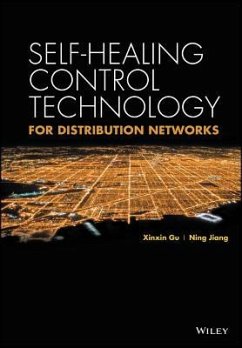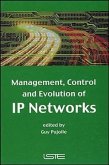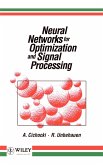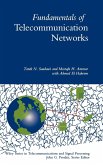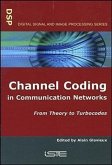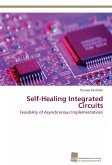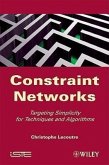Xinxin Gu, Ning Jiang, China Electric Power Press
Self-Healing Control Technology for Distribution Networks
Xinxin Gu, Ning Jiang, China Electric Power Press
Self-Healing Control Technology for Distribution Networks
- Gebundenes Buch
- Merkliste
- Auf die Merkliste
- Bewerten Bewerten
- Teilen
- Produkt teilen
- Produkterinnerung
- Produkterinnerung
This book systematically introduces self-healing control theory for distribution networks, rigorously supported by simulations and applications. It first discusses the functions of a smart grid before explaining how self-healing control theory can be developed and applied. Readers are brought through the related topics of self-healing control system infrastructure, advanced application software, new generation protective relay, monitoring/management systems, implementation issues, and pilot projects. The main purpose of this book is to provide researchers, engineers, and graduate students with…mehr
Andere Kunden interessierten sich auch für
![Management, Control and Evolution of IP Networks Management, Control and Evolution of IP Networks]() Management, Control and Evolution of IP Networks443,99 €
Management, Control and Evolution of IP Networks443,99 €![Neural Networks for Optimization and Signal Processing Neural Networks for Optimization and Signal Processing]() Andrzej CichockiNeural Networks for Optimization and Signal Processing352,99 €
Andrzej CichockiNeural Networks for Optimization and Signal Processing352,99 €![Fundamentals of Telecommunication Networks Fundamentals of Telecommunication Networks]() Tarek N SaadawiFundamentals of Telecommunication Networks247,99 €
Tarek N SaadawiFundamentals of Telecommunication Networks247,99 €![Channel Coding in Communication Networks Channel Coding in Communication Networks]() Channel Coding in Communication Networks300,99 €
Channel Coding in Communication Networks300,99 €![Self-Healing Integrated Circuits Self-Healing Integrated Circuits]() Thomas PanhoferSelf-Healing Integrated Circuits49,99 €
Thomas PanhoferSelf-Healing Integrated Circuits49,99 €![Security Designs for the Cloud, Iot, and Social Networking Security Designs for the Cloud, Iot, and Social Networking]() Security Designs for the Cloud, Iot, and Social Networking264,99 €
Security Designs for the Cloud, Iot, and Social Networking264,99 €![Constraint Networks Constraint Networks]() Christophe LecoutreConstraint Networks363,99 €
Christophe LecoutreConstraint Networks363,99 €-
-
-
This book systematically introduces self-healing control theory for distribution networks, rigorously supported by simulations and applications. It first discusses the functions of a smart grid before explaining how self-healing control theory can be developed and applied. Readers are brought through the related topics of self-healing control system infrastructure, advanced application software, new generation protective relay, monitoring/management systems, implementation issues, and pilot projects. The main purpose of this book is to provide researchers, engineers, and graduate students with a comprehensive understanding of self-healing control technologies as applied to a city grid and how to monitor system performance. * A comprehensive introduction to self-healing control for distribution networks * Details the construction of self-healing control systems with simulations and applications * Provides key principles for new generation protective relay and network protection * Demonstrates how to monitor and manage system performance * Highlights practical implementation of self-healing control technologies, backed up by rigorous research data and simulations Self-healing Control Technology for Distribution Networks is an essential reference text for researchers and engineers in the field of distributed system engineering, smart grids, and electrical engineering.
Hinweis: Dieser Artikel kann nur an eine deutsche Lieferadresse ausgeliefert werden.
Hinweis: Dieser Artikel kann nur an eine deutsche Lieferadresse ausgeliefert werden.
Produktdetails
- Produktdetails
- Verlag: Wiley
- Seitenzahl: 216
- Erscheinungstermin: 1. Mai 2017
- Englisch
- Abmessung: 246mm x 165mm x 15mm
- Gewicht: 499g
- ISBN-13: 9781119109334
- ISBN-10: 1119109337
- Artikelnr.: 47707245
- Herstellerkennzeichnung
- Libri GmbH
- Europaallee 1
- 36244 Bad Hersfeld
- gpsr@libri.de
- Verlag: Wiley
- Seitenzahl: 216
- Erscheinungstermin: 1. Mai 2017
- Englisch
- Abmessung: 246mm x 165mm x 15mm
- Gewicht: 499g
- ISBN-13: 9781119109334
- ISBN-10: 1119109337
- Artikelnr.: 47707245
- Herstellerkennzeichnung
- Libri GmbH
- Europaallee 1
- 36244 Bad Hersfeld
- gpsr@libri.de
Xinxin Gu, NARI Technology Co. LTD Ning Jiang, Nanjing Power Supply Company, China
Foreword ix Preface xi 1 Overview 1 1.1 Proposal of Smart Grid 1 1.2 Development Status of China's Power Distribution Network Automation 2 1.3 Development of Self
healing Control Theory 3 2 Architecture of Self
healing Control System for Distribution Network 7 2.1 Characteristics 7 2.2 Structure of Self
healing Control System 8 3 Advanced Application Software of Smart Dispatching and Self
healing Control for Power Distribution Network 11 3.1 Design Principles of Application Software for Smart Dispatching Platform 11 3.2 Overall Structure of Automation System for Power Distribution Network 13 3.2.1 Supporting Platform Layer 13 3.2.1.1 Integration Bus Layer 13 3.2.1.2 Data Bus Layer 15 3.2.1.3 Public Service Layer 15 3.2.2 Application System Layer 16 3.3 Smart Dispatching Platform Functions 16 3.3.1 Supporting Platform 16 3.3.2 Operation Monitoring of Power Distribution Network 17 3.3.3 Information Interaction with Other Systems 19 3.3.4 Advanced Application Software of Self
healing Control 21 4 A New Generation of Relay Protection for Distribution Networks 27 4.1 Principles and Application of Network Protection for Distribution Networks 27 4.2 Adaptive Protection 28 4.2.1 Development History and Features of Adaptive Protection 29 4.2.2 Realization Mode of Adaptive Protection 31 4.2.2.1 Local Adaptive Protection (Non
channel Adaptive Protection) 32 4.2.2.2 Area/Wide
Area Adaptive Protection 34 4.3 Networking Protection for Distribution Network 36 4.3.1 Concept of Networking Protection for Distribution Network 37 4.3.1.1 Networking Protection 37 4.3.1.2 Area/Wide
Area Adaptive Protection Based on Networking - Networking Protection for Distribution Network 38 4.3.1.3 Distribution Network Automation System - Fundamental Framework of Networking Protection 39 4.3.1.4 Networking: An Effective Method for Realizing Area/Wide
Area Adaptive Protection for Distribution Networks 42 4.3.2 Realization of Networking Protection for Distribution Network 44 4.3.2.1 System Framework of Networking Protection for Distribution Network 44 4.3.2.2 Dispatching Control Layer of Distribution Network 44 4.3.2.3 Substation Layer 44 4.3.2.4 Networking Bus Protection 46 4.3.2.5 Network Backup Automatic Switching 47 4.3.2.6 Network Adaptive Current Protection 49 5 Distribution Network Communication Technology and Networking 57 5.1 Introduction to Distribution Communications 57 5.2 Backbone Communication Network 59 5.2.1 SDH Technology 59 5.2.2 MSTP Technology 59 5.3 Distribution Communication Technology 60 5.3.1 Epon 60 5.3.1.1 EPON Technology and Characteristics 60 5.3.1.2 EPON Interface 63 5.3.1.3 EPON Transmission System 63 5.3.2 Industrial Ethernet 64 5.3.3 Wireless Communication 65 5.3.4 Power
Line Carrier 66 5.4 Communication Networking Method of Power Distribution 68 5.4.1 Basic Topology 68 5.4.1.1 Networking Application 70 5.4.2 Industrial Ethernet 72 5.4.3 Wireless Communication 72 5.4.3.1 Short
Distance Communication 72 5.4.3.2 Td
lte 73 5.4.4 Hybrid Networking 74 5.4.4.1 Optical Fiber + Power
Line Carrier 77 5.4.4.2 Optical Fiber + Wireless 77 5.4.4.3 Power
Line Carrier + Wireless 77 6 Detection Management System for Distribution Network Devices 81 6.1 Significance of Distribution Equipment Condition
Based Monitoring and Maintenance 81 6.1.1 Equipment Condition Monitoring Technology 83 6.1.1.1 Common Sensors 83 6.1.1.2 Distribution Transformer Condition Monitoring and Diagnosis Technology 84 6.1.1.3 HV Breaker Condition
Based Monitor 94 6.1.1.4 Lighting Arrester Condition Monitoring 105 6.1.1.5 Capacitive Equipment Status
Detection System 119 6.2 Distribution Network Device Monitoring System and Network Monitoring Management System 128 6.2.1 Distribution Network Equipment Supervisory Terminal and Distribution Network System Terminal Layer 129 6.2.2 Condition Monitoring System Relies on Automation System Communication Channel 130 6.2.3 Primary Station for Distribution Equipment Condition
Based Maintenance and Integration of DMS 131 6.2.4 Geological Information
Based Distribution Network Condition Monitoring and Maintenance 132 6.2.4.1 Integration Mode 133 6.2.4.2 Information Interaction 134 6.2.5 Distribution Equipment Assessment and Condition Maintenance 135 6.2.5.1 Information Support 136 6.2.5.2 Distribution Device Condition Assessment 138 6.2.5.3 Device Risk Assessment 140 6.2.5.4 Fault Diagnosis 143 6.2.5.5 Condition Improvement and Maintenance 144 7 Implementation of Self
healing Control Technology 147 7.1 Principle of Implementation of Self
healing Control 147 7.1.1 Characteristics of Self
healing Function 147 7.1.2 Basic Principle of Self
healing Control 147 7.2 Self
healing Control Method 149 7.2.1 Urban Distribution Network Self
healing Control Method Based on Quantity of State 149 7.2.2 Self
healing Control Method for Distribution Network Based on Distributed Power and Micrögrid 151 7.2.3 Distribution Network Self
healing Control Based on Coordination Control Model 151 7.3 Implementation of Distribution Network Self
healing 159 7.3.1 Self
adaptive Relay Protection Units 160 7.3.2 Relay Protection 161 7.3.2.1 Basic Requirements 161 7.3.2.2 Self
adaption 161 7.3.3 Scada/rtu 163 7.3.3.1 History of SCADA 163 7.3.3.2 Development of SCADA 164 7.3.4 Wide
Area Measuring System and Phasor Measuring Unit 165 7.3.4.1 WAMS System 167 7.3.4.2 PMU/WAMS and SCADA/EMS 167 7.3.4.3 Application of PMU or WAMS 168 7.3.5 Smart Grid and WAMS 169 8 Pilot Project 171 8.1 Simulation Analysis 171 8.1.1 Components 171 8.1.2 Test Items 171 8.1.3 Information Flow of Simulation System 171 8.1.4 Test Results 171 8.1.4.1 System States 171 8.1.4.2 System Management 171 8.1.4.3 Self
healing Control 171 8.1.4.4 Simulation Analysis 172 8.1.4.5 History Query 172 8.1.5 Simulation Cases 174 8.1.5.1 Simulation Case 1 174 8.1.5.2 Simulation Case 2 174 8.1.5.3 Simulation Case 3 175 8.2 Pilot Application 177 8.2.1 Requirements for Pilot Power Grid 177 8.2.2 Contents of Demonstration Project 178 8.2.3 Distribution Network of Pilot Project 178 9 Development Progress of Smart Grid in the World 189 9.1 Introduction 189 9.2 Current Situation of Chinese Smart Grid: China's National Strategy 190 9.2.1 Distribution Network Automation 190 9.2.2 Standards Release 190 9.2.3 Research and Demonstration 190 9.3 Current Situation of Foreign Countries' Smart Grid 193 9.3.1 United States 193 9.3.2 Europe 193 9.3.3 The Americas 194 9.3.4 Multinational Cooperation 194 9.3.5 EPRI USA Smart Grid Demonstration Initiative: 5 Year Update on Multinational Cooperation 195 9.4 Energy Network 196 9.5 Opportunities and Challenges 196 References 199 Postscript 201 Index 203
healing Control Theory 3 2 Architecture of Self
healing Control System for Distribution Network 7 2.1 Characteristics 7 2.2 Structure of Self
healing Control System 8 3 Advanced Application Software of Smart Dispatching and Self
healing Control for Power Distribution Network 11 3.1 Design Principles of Application Software for Smart Dispatching Platform 11 3.2 Overall Structure of Automation System for Power Distribution Network 13 3.2.1 Supporting Platform Layer 13 3.2.1.1 Integration Bus Layer 13 3.2.1.2 Data Bus Layer 15 3.2.1.3 Public Service Layer 15 3.2.2 Application System Layer 16 3.3 Smart Dispatching Platform Functions 16 3.3.1 Supporting Platform 16 3.3.2 Operation Monitoring of Power Distribution Network 17 3.3.3 Information Interaction with Other Systems 19 3.3.4 Advanced Application Software of Self
healing Control 21 4 A New Generation of Relay Protection for Distribution Networks 27 4.1 Principles and Application of Network Protection for Distribution Networks 27 4.2 Adaptive Protection 28 4.2.1 Development History and Features of Adaptive Protection 29 4.2.2 Realization Mode of Adaptive Protection 31 4.2.2.1 Local Adaptive Protection (Non
channel Adaptive Protection) 32 4.2.2.2 Area/Wide
Area Adaptive Protection 34 4.3 Networking Protection for Distribution Network 36 4.3.1 Concept of Networking Protection for Distribution Network 37 4.3.1.1 Networking Protection 37 4.3.1.2 Area/Wide
Area Adaptive Protection Based on Networking - Networking Protection for Distribution Network 38 4.3.1.3 Distribution Network Automation System - Fundamental Framework of Networking Protection 39 4.3.1.4 Networking: An Effective Method for Realizing Area/Wide
Area Adaptive Protection for Distribution Networks 42 4.3.2 Realization of Networking Protection for Distribution Network 44 4.3.2.1 System Framework of Networking Protection for Distribution Network 44 4.3.2.2 Dispatching Control Layer of Distribution Network 44 4.3.2.3 Substation Layer 44 4.3.2.4 Networking Bus Protection 46 4.3.2.5 Network Backup Automatic Switching 47 4.3.2.6 Network Adaptive Current Protection 49 5 Distribution Network Communication Technology and Networking 57 5.1 Introduction to Distribution Communications 57 5.2 Backbone Communication Network 59 5.2.1 SDH Technology 59 5.2.2 MSTP Technology 59 5.3 Distribution Communication Technology 60 5.3.1 Epon 60 5.3.1.1 EPON Technology and Characteristics 60 5.3.1.2 EPON Interface 63 5.3.1.3 EPON Transmission System 63 5.3.2 Industrial Ethernet 64 5.3.3 Wireless Communication 65 5.3.4 Power
Line Carrier 66 5.4 Communication Networking Method of Power Distribution 68 5.4.1 Basic Topology 68 5.4.1.1 Networking Application 70 5.4.2 Industrial Ethernet 72 5.4.3 Wireless Communication 72 5.4.3.1 Short
Distance Communication 72 5.4.3.2 Td
lte 73 5.4.4 Hybrid Networking 74 5.4.4.1 Optical Fiber + Power
Line Carrier 77 5.4.4.2 Optical Fiber + Wireless 77 5.4.4.3 Power
Line Carrier + Wireless 77 6 Detection Management System for Distribution Network Devices 81 6.1 Significance of Distribution Equipment Condition
Based Monitoring and Maintenance 81 6.1.1 Equipment Condition Monitoring Technology 83 6.1.1.1 Common Sensors 83 6.1.1.2 Distribution Transformer Condition Monitoring and Diagnosis Technology 84 6.1.1.3 HV Breaker Condition
Based Monitor 94 6.1.1.4 Lighting Arrester Condition Monitoring 105 6.1.1.5 Capacitive Equipment Status
Detection System 119 6.2 Distribution Network Device Monitoring System and Network Monitoring Management System 128 6.2.1 Distribution Network Equipment Supervisory Terminal and Distribution Network System Terminal Layer 129 6.2.2 Condition Monitoring System Relies on Automation System Communication Channel 130 6.2.3 Primary Station for Distribution Equipment Condition
Based Maintenance and Integration of DMS 131 6.2.4 Geological Information
Based Distribution Network Condition Monitoring and Maintenance 132 6.2.4.1 Integration Mode 133 6.2.4.2 Information Interaction 134 6.2.5 Distribution Equipment Assessment and Condition Maintenance 135 6.2.5.1 Information Support 136 6.2.5.2 Distribution Device Condition Assessment 138 6.2.5.3 Device Risk Assessment 140 6.2.5.4 Fault Diagnosis 143 6.2.5.5 Condition Improvement and Maintenance 144 7 Implementation of Self
healing Control Technology 147 7.1 Principle of Implementation of Self
healing Control 147 7.1.1 Characteristics of Self
healing Function 147 7.1.2 Basic Principle of Self
healing Control 147 7.2 Self
healing Control Method 149 7.2.1 Urban Distribution Network Self
healing Control Method Based on Quantity of State 149 7.2.2 Self
healing Control Method for Distribution Network Based on Distributed Power and Micrögrid 151 7.2.3 Distribution Network Self
healing Control Based on Coordination Control Model 151 7.3 Implementation of Distribution Network Self
healing 159 7.3.1 Self
adaptive Relay Protection Units 160 7.3.2 Relay Protection 161 7.3.2.1 Basic Requirements 161 7.3.2.2 Self
adaption 161 7.3.3 Scada/rtu 163 7.3.3.1 History of SCADA 163 7.3.3.2 Development of SCADA 164 7.3.4 Wide
Area Measuring System and Phasor Measuring Unit 165 7.3.4.1 WAMS System 167 7.3.4.2 PMU/WAMS and SCADA/EMS 167 7.3.4.3 Application of PMU or WAMS 168 7.3.5 Smart Grid and WAMS 169 8 Pilot Project 171 8.1 Simulation Analysis 171 8.1.1 Components 171 8.1.2 Test Items 171 8.1.3 Information Flow of Simulation System 171 8.1.4 Test Results 171 8.1.4.1 System States 171 8.1.4.2 System Management 171 8.1.4.3 Self
healing Control 171 8.1.4.4 Simulation Analysis 172 8.1.4.5 History Query 172 8.1.5 Simulation Cases 174 8.1.5.1 Simulation Case 1 174 8.1.5.2 Simulation Case 2 174 8.1.5.3 Simulation Case 3 175 8.2 Pilot Application 177 8.2.1 Requirements for Pilot Power Grid 177 8.2.2 Contents of Demonstration Project 178 8.2.3 Distribution Network of Pilot Project 178 9 Development Progress of Smart Grid in the World 189 9.1 Introduction 189 9.2 Current Situation of Chinese Smart Grid: China's National Strategy 190 9.2.1 Distribution Network Automation 190 9.2.2 Standards Release 190 9.2.3 Research and Demonstration 190 9.3 Current Situation of Foreign Countries' Smart Grid 193 9.3.1 United States 193 9.3.2 Europe 193 9.3.3 The Americas 194 9.3.4 Multinational Cooperation 194 9.3.5 EPRI USA Smart Grid Demonstration Initiative: 5 Year Update on Multinational Cooperation 195 9.4 Energy Network 196 9.5 Opportunities and Challenges 196 References 199 Postscript 201 Index 203
Foreword ix Preface xi 1 Overview 1 1.1 Proposal of Smart Grid 1 1.2 Development Status of China's Power Distribution Network Automation 2 1.3 Development of Self
healing Control Theory 3 2 Architecture of Self
healing Control System for Distribution Network 7 2.1 Characteristics 7 2.2 Structure of Self
healing Control System 8 3 Advanced Application Software of Smart Dispatching and Self
healing Control for Power Distribution Network 11 3.1 Design Principles of Application Software for Smart Dispatching Platform 11 3.2 Overall Structure of Automation System for Power Distribution Network 13 3.2.1 Supporting Platform Layer 13 3.2.1.1 Integration Bus Layer 13 3.2.1.2 Data Bus Layer 15 3.2.1.3 Public Service Layer 15 3.2.2 Application System Layer 16 3.3 Smart Dispatching Platform Functions 16 3.3.1 Supporting Platform 16 3.3.2 Operation Monitoring of Power Distribution Network 17 3.3.3 Information Interaction with Other Systems 19 3.3.4 Advanced Application Software of Self
healing Control 21 4 A New Generation of Relay Protection for Distribution Networks 27 4.1 Principles and Application of Network Protection for Distribution Networks 27 4.2 Adaptive Protection 28 4.2.1 Development History and Features of Adaptive Protection 29 4.2.2 Realization Mode of Adaptive Protection 31 4.2.2.1 Local Adaptive Protection (Non
channel Adaptive Protection) 32 4.2.2.2 Area/Wide
Area Adaptive Protection 34 4.3 Networking Protection for Distribution Network 36 4.3.1 Concept of Networking Protection for Distribution Network 37 4.3.1.1 Networking Protection 37 4.3.1.2 Area/Wide
Area Adaptive Protection Based on Networking - Networking Protection for Distribution Network 38 4.3.1.3 Distribution Network Automation System - Fundamental Framework of Networking Protection 39 4.3.1.4 Networking: An Effective Method for Realizing Area/Wide
Area Adaptive Protection for Distribution Networks 42 4.3.2 Realization of Networking Protection for Distribution Network 44 4.3.2.1 System Framework of Networking Protection for Distribution Network 44 4.3.2.2 Dispatching Control Layer of Distribution Network 44 4.3.2.3 Substation Layer 44 4.3.2.4 Networking Bus Protection 46 4.3.2.5 Network Backup Automatic Switching 47 4.3.2.6 Network Adaptive Current Protection 49 5 Distribution Network Communication Technology and Networking 57 5.1 Introduction to Distribution Communications 57 5.2 Backbone Communication Network 59 5.2.1 SDH Technology 59 5.2.2 MSTP Technology 59 5.3 Distribution Communication Technology 60 5.3.1 Epon 60 5.3.1.1 EPON Technology and Characteristics 60 5.3.1.2 EPON Interface 63 5.3.1.3 EPON Transmission System 63 5.3.2 Industrial Ethernet 64 5.3.3 Wireless Communication 65 5.3.4 Power
Line Carrier 66 5.4 Communication Networking Method of Power Distribution 68 5.4.1 Basic Topology 68 5.4.1.1 Networking Application 70 5.4.2 Industrial Ethernet 72 5.4.3 Wireless Communication 72 5.4.3.1 Short
Distance Communication 72 5.4.3.2 Td
lte 73 5.4.4 Hybrid Networking 74 5.4.4.1 Optical Fiber + Power
Line Carrier 77 5.4.4.2 Optical Fiber + Wireless 77 5.4.4.3 Power
Line Carrier + Wireless 77 6 Detection Management System for Distribution Network Devices 81 6.1 Significance of Distribution Equipment Condition
Based Monitoring and Maintenance 81 6.1.1 Equipment Condition Monitoring Technology 83 6.1.1.1 Common Sensors 83 6.1.1.2 Distribution Transformer Condition Monitoring and Diagnosis Technology 84 6.1.1.3 HV Breaker Condition
Based Monitor 94 6.1.1.4 Lighting Arrester Condition Monitoring 105 6.1.1.5 Capacitive Equipment Status
Detection System 119 6.2 Distribution Network Device Monitoring System and Network Monitoring Management System 128 6.2.1 Distribution Network Equipment Supervisory Terminal and Distribution Network System Terminal Layer 129 6.2.2 Condition Monitoring System Relies on Automation System Communication Channel 130 6.2.3 Primary Station for Distribution Equipment Condition
Based Maintenance and Integration of DMS 131 6.2.4 Geological Information
Based Distribution Network Condition Monitoring and Maintenance 132 6.2.4.1 Integration Mode 133 6.2.4.2 Information Interaction 134 6.2.5 Distribution Equipment Assessment and Condition Maintenance 135 6.2.5.1 Information Support 136 6.2.5.2 Distribution Device Condition Assessment 138 6.2.5.3 Device Risk Assessment 140 6.2.5.4 Fault Diagnosis 143 6.2.5.5 Condition Improvement and Maintenance 144 7 Implementation of Self
healing Control Technology 147 7.1 Principle of Implementation of Self
healing Control 147 7.1.1 Characteristics of Self
healing Function 147 7.1.2 Basic Principle of Self
healing Control 147 7.2 Self
healing Control Method 149 7.2.1 Urban Distribution Network Self
healing Control Method Based on Quantity of State 149 7.2.2 Self
healing Control Method for Distribution Network Based on Distributed Power and Micrögrid 151 7.2.3 Distribution Network Self
healing Control Based on Coordination Control Model 151 7.3 Implementation of Distribution Network Self
healing 159 7.3.1 Self
adaptive Relay Protection Units 160 7.3.2 Relay Protection 161 7.3.2.1 Basic Requirements 161 7.3.2.2 Self
adaption 161 7.3.3 Scada/rtu 163 7.3.3.1 History of SCADA 163 7.3.3.2 Development of SCADA 164 7.3.4 Wide
Area Measuring System and Phasor Measuring Unit 165 7.3.4.1 WAMS System 167 7.3.4.2 PMU/WAMS and SCADA/EMS 167 7.3.4.3 Application of PMU or WAMS 168 7.3.5 Smart Grid and WAMS 169 8 Pilot Project 171 8.1 Simulation Analysis 171 8.1.1 Components 171 8.1.2 Test Items 171 8.1.3 Information Flow of Simulation System 171 8.1.4 Test Results 171 8.1.4.1 System States 171 8.1.4.2 System Management 171 8.1.4.3 Self
healing Control 171 8.1.4.4 Simulation Analysis 172 8.1.4.5 History Query 172 8.1.5 Simulation Cases 174 8.1.5.1 Simulation Case 1 174 8.1.5.2 Simulation Case 2 174 8.1.5.3 Simulation Case 3 175 8.2 Pilot Application 177 8.2.1 Requirements for Pilot Power Grid 177 8.2.2 Contents of Demonstration Project 178 8.2.3 Distribution Network of Pilot Project 178 9 Development Progress of Smart Grid in the World 189 9.1 Introduction 189 9.2 Current Situation of Chinese Smart Grid: China's National Strategy 190 9.2.1 Distribution Network Automation 190 9.2.2 Standards Release 190 9.2.3 Research and Demonstration 190 9.3 Current Situation of Foreign Countries' Smart Grid 193 9.3.1 United States 193 9.3.2 Europe 193 9.3.3 The Americas 194 9.3.4 Multinational Cooperation 194 9.3.5 EPRI USA Smart Grid Demonstration Initiative: 5 Year Update on Multinational Cooperation 195 9.4 Energy Network 196 9.5 Opportunities and Challenges 196 References 199 Postscript 201 Index 203
healing Control Theory 3 2 Architecture of Self
healing Control System for Distribution Network 7 2.1 Characteristics 7 2.2 Structure of Self
healing Control System 8 3 Advanced Application Software of Smart Dispatching and Self
healing Control for Power Distribution Network 11 3.1 Design Principles of Application Software for Smart Dispatching Platform 11 3.2 Overall Structure of Automation System for Power Distribution Network 13 3.2.1 Supporting Platform Layer 13 3.2.1.1 Integration Bus Layer 13 3.2.1.2 Data Bus Layer 15 3.2.1.3 Public Service Layer 15 3.2.2 Application System Layer 16 3.3 Smart Dispatching Platform Functions 16 3.3.1 Supporting Platform 16 3.3.2 Operation Monitoring of Power Distribution Network 17 3.3.3 Information Interaction with Other Systems 19 3.3.4 Advanced Application Software of Self
healing Control 21 4 A New Generation of Relay Protection for Distribution Networks 27 4.1 Principles and Application of Network Protection for Distribution Networks 27 4.2 Adaptive Protection 28 4.2.1 Development History and Features of Adaptive Protection 29 4.2.2 Realization Mode of Adaptive Protection 31 4.2.2.1 Local Adaptive Protection (Non
channel Adaptive Protection) 32 4.2.2.2 Area/Wide
Area Adaptive Protection 34 4.3 Networking Protection for Distribution Network 36 4.3.1 Concept of Networking Protection for Distribution Network 37 4.3.1.1 Networking Protection 37 4.3.1.2 Area/Wide
Area Adaptive Protection Based on Networking - Networking Protection for Distribution Network 38 4.3.1.3 Distribution Network Automation System - Fundamental Framework of Networking Protection 39 4.3.1.4 Networking: An Effective Method for Realizing Area/Wide
Area Adaptive Protection for Distribution Networks 42 4.3.2 Realization of Networking Protection for Distribution Network 44 4.3.2.1 System Framework of Networking Protection for Distribution Network 44 4.3.2.2 Dispatching Control Layer of Distribution Network 44 4.3.2.3 Substation Layer 44 4.3.2.4 Networking Bus Protection 46 4.3.2.5 Network Backup Automatic Switching 47 4.3.2.6 Network Adaptive Current Protection 49 5 Distribution Network Communication Technology and Networking 57 5.1 Introduction to Distribution Communications 57 5.2 Backbone Communication Network 59 5.2.1 SDH Technology 59 5.2.2 MSTP Technology 59 5.3 Distribution Communication Technology 60 5.3.1 Epon 60 5.3.1.1 EPON Technology and Characteristics 60 5.3.1.2 EPON Interface 63 5.3.1.3 EPON Transmission System 63 5.3.2 Industrial Ethernet 64 5.3.3 Wireless Communication 65 5.3.4 Power
Line Carrier 66 5.4 Communication Networking Method of Power Distribution 68 5.4.1 Basic Topology 68 5.4.1.1 Networking Application 70 5.4.2 Industrial Ethernet 72 5.4.3 Wireless Communication 72 5.4.3.1 Short
Distance Communication 72 5.4.3.2 Td
lte 73 5.4.4 Hybrid Networking 74 5.4.4.1 Optical Fiber + Power
Line Carrier 77 5.4.4.2 Optical Fiber + Wireless 77 5.4.4.3 Power
Line Carrier + Wireless 77 6 Detection Management System for Distribution Network Devices 81 6.1 Significance of Distribution Equipment Condition
Based Monitoring and Maintenance 81 6.1.1 Equipment Condition Monitoring Technology 83 6.1.1.1 Common Sensors 83 6.1.1.2 Distribution Transformer Condition Monitoring and Diagnosis Technology 84 6.1.1.3 HV Breaker Condition
Based Monitor 94 6.1.1.4 Lighting Arrester Condition Monitoring 105 6.1.1.5 Capacitive Equipment Status
Detection System 119 6.2 Distribution Network Device Monitoring System and Network Monitoring Management System 128 6.2.1 Distribution Network Equipment Supervisory Terminal and Distribution Network System Terminal Layer 129 6.2.2 Condition Monitoring System Relies on Automation System Communication Channel 130 6.2.3 Primary Station for Distribution Equipment Condition
Based Maintenance and Integration of DMS 131 6.2.4 Geological Information
Based Distribution Network Condition Monitoring and Maintenance 132 6.2.4.1 Integration Mode 133 6.2.4.2 Information Interaction 134 6.2.5 Distribution Equipment Assessment and Condition Maintenance 135 6.2.5.1 Information Support 136 6.2.5.2 Distribution Device Condition Assessment 138 6.2.5.3 Device Risk Assessment 140 6.2.5.4 Fault Diagnosis 143 6.2.5.5 Condition Improvement and Maintenance 144 7 Implementation of Self
healing Control Technology 147 7.1 Principle of Implementation of Self
healing Control 147 7.1.1 Characteristics of Self
healing Function 147 7.1.2 Basic Principle of Self
healing Control 147 7.2 Self
healing Control Method 149 7.2.1 Urban Distribution Network Self
healing Control Method Based on Quantity of State 149 7.2.2 Self
healing Control Method for Distribution Network Based on Distributed Power and Micrögrid 151 7.2.3 Distribution Network Self
healing Control Based on Coordination Control Model 151 7.3 Implementation of Distribution Network Self
healing 159 7.3.1 Self
adaptive Relay Protection Units 160 7.3.2 Relay Protection 161 7.3.2.1 Basic Requirements 161 7.3.2.2 Self
adaption 161 7.3.3 Scada/rtu 163 7.3.3.1 History of SCADA 163 7.3.3.2 Development of SCADA 164 7.3.4 Wide
Area Measuring System and Phasor Measuring Unit 165 7.3.4.1 WAMS System 167 7.3.4.2 PMU/WAMS and SCADA/EMS 167 7.3.4.3 Application of PMU or WAMS 168 7.3.5 Smart Grid and WAMS 169 8 Pilot Project 171 8.1 Simulation Analysis 171 8.1.1 Components 171 8.1.2 Test Items 171 8.1.3 Information Flow of Simulation System 171 8.1.4 Test Results 171 8.1.4.1 System States 171 8.1.4.2 System Management 171 8.1.4.3 Self
healing Control 171 8.1.4.4 Simulation Analysis 172 8.1.4.5 History Query 172 8.1.5 Simulation Cases 174 8.1.5.1 Simulation Case 1 174 8.1.5.2 Simulation Case 2 174 8.1.5.3 Simulation Case 3 175 8.2 Pilot Application 177 8.2.1 Requirements for Pilot Power Grid 177 8.2.2 Contents of Demonstration Project 178 8.2.3 Distribution Network of Pilot Project 178 9 Development Progress of Smart Grid in the World 189 9.1 Introduction 189 9.2 Current Situation of Chinese Smart Grid: China's National Strategy 190 9.2.1 Distribution Network Automation 190 9.2.2 Standards Release 190 9.2.3 Research and Demonstration 190 9.3 Current Situation of Foreign Countries' Smart Grid 193 9.3.1 United States 193 9.3.2 Europe 193 9.3.3 The Americas 194 9.3.4 Multinational Cooperation 194 9.3.5 EPRI USA Smart Grid Demonstration Initiative: 5 Year Update on Multinational Cooperation 195 9.4 Energy Network 196 9.5 Opportunities and Challenges 196 References 199 Postscript 201 Index 203

